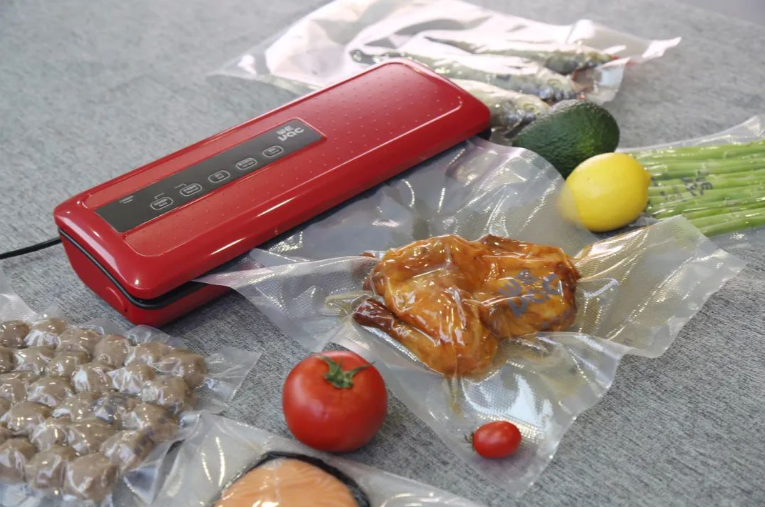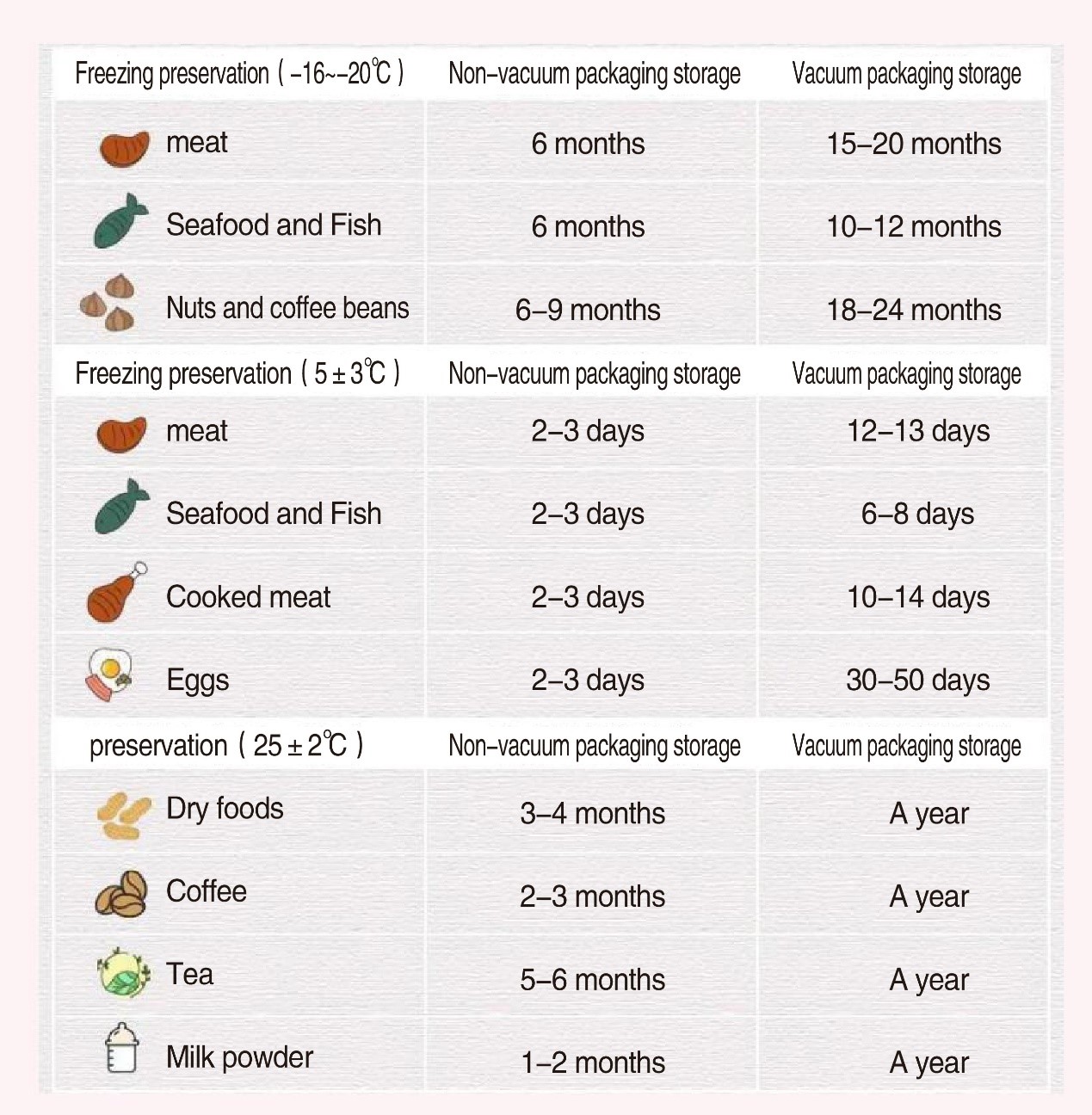Recently, some consumers consulted on how to buy vacuum packaged food. It is understood that at present, there are three ways to keep food fresh: filling with nitrogen, vacuuming and adding preservatives. Vacuum preservation is relatively convenient, natural and healthy.
Vacuum packaging means that the vacuum packaging bag completes the final form of the packaged contents in the vacuum packaging machine. One of the important links is air extraction and deoxidization, which is to prevent the food from mildew and decay. Another important function of vacuum deoxidization is to prevent food oxidation. For example, fat foods contain a large amount of unsaturated fatty acids, which are easy to change color and taste by oxidation. Vacuum sealing can effectively isolate the air from oxidation, and maintain the color, flavor and nutritional value of food.
It is worth noting that vacuum packaging itself does not have sterilization effect. In order to truly take advantage of the advantages of vacuum packaging technology, it is also necessary to carry out necessary sterilization after the completion of vacuum packaging, such as high-temperature sterilization, irradiation sterilization, etc. Any perishable food that needs to be refrigerated must still be refrigerated or frozen after vacuum packaging. Vacuum packaging is not an alternative to refrigeration or frozen preservation. Moreover, the vacuum preservation period of food materials stored at different temperatures is different.
How to choose safe vacuum packaged food?
First, observe the swelling bag
Whether to expand the bag is the most intuitive and convenient way for consumers to judge whether the food vacuum packaging has deteriorated. According to the common sense of physics, under normal circumstances, the air pressure in the packaged food bag should be consistent with the outside world or less than the outside world after vacuuming. If the bag is expanded, it means that the air pressure in the bag is higher than the outside world, which means that new gases are generated in the sealed bag. These gases are the metabolites generated after the mass reproduction of microorganisms, because a small amount of microbial metabolites are not enough to expand the bag. Most of the bacteria or molds (lactic acid bacteria, yeast, aerogenes, polymyxobacillus, Aspergillus, etc.) that may cause food corruption will produce a large number of gases in the process of decomposing protein and sugar in food, such as carbon dioxide, hydrogen sulfide, ammonia, alkane, etc., which “blow” the packaging bag into a balloon. During the sterilization process of food before packaging, microorganisms and buds have not been completely killed. After packaging, microorganisms proliferate in large numbers, causing corruption. Naturally, the problem of bulging of packaging bags occurs.
Second, smell
When shopping for vacuum packaged food, do not take the smell of food as the judgment standard. If the food flavor spills out of the packaging, it means that the vacuum packaging itself is no longer vacuum, and there is air leakage. This means that bacteria can also “flow” freely.
Third, inspection marks
To get a food package, first check whether its production license, SC code, manufacturer and ingredient list are complete. These certificates are like “ID cards” of food. Behind the certificates are the “past and present lives” of food, where they came from and where they have been.
Fourth, pay strict attention to the shelf life of food
Food close to its shelf life is not harmful, but its color and nutrition will decline. After the vacuum packaged food is opened, it should be eaten as soon as possible and should not be stored in the refrigerator. When purchasing “buy one get one free” food, pay attention to the production date and shelf life of the tied goods.
Post time: Jun-27-2022


